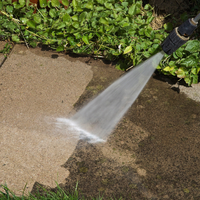Lockout Tagout Kits
Lockout kits are equipped with the tools you need to isolate mechanical and electrical control points. Want to learn more? Visit Brady's LOTO resources to learn about "Elements of a Lockout Tagout Program", "Group Lockout Best Practices" or our definitive guide - "What is Lockout Tagout?". Need a full Lockout Tagout solution? Brady offers a wide range of services that help you solve your Lockout Tagout compliance and behavioral safety hurdles.
Lockout/tagout (LOTO) procedures are designed to prevent accidental startup of machines or equipment and to prevent the release of stored energy during servicing or maintenance. Use of the general lockout/tagout procedure that involves applying locks and/or tags as direct controls (as can be seen in the procedure below) , ensures that equipment is isolated from energy sources and injuries are prevented. Additional, machine-specific, procedures are required when there is more than one energy source. Lockout/tagout program (see attached document) for more specific details in relation to both general and machine-specific LOTO procedures. Training is required for all personnel prior to utilizing LOTO equipment. For more information on Working on or Near Energized Circuits visit the web page.
General Lockout/Tagout Procedure
- Notify appropriate affected employees that servicing or maintenance is required on a machine or equipment and that the machine or equipment must be shut down and locked out to perform the servicing or maintenance.
- If the machine or equipment is operating, shut it down by the normal stopping procedure (depress the stop button, open switch, close valve, etc.).
- De-activate the energy isolating device(s) (such as switches, valves, circuit breakers, etc.) so that the machine or equipment is isolated from the energy source(s).
- Lock or tag out the energy isolating device(s) with assigned individual lockout/tagout device(s).
Note: If a tag is used without a lockout device to isolate an electrical circuit, then it must be supplemented by one additional safety measure such as the removal of an isolating circuit element, blocking of a controlling switch, or opening an extra disconnecting device.
- Dissipate or restrain stored or residual energy (such as that in capacitors, springs, elevated machine members, rotating flywheels, hydraulic systems, and air, gas, steam, or water pressure, etc.) by methods such as grounding, repositioning, blocking, bleeding down, etc.
- Ensure that the equipment is disconnected from the energy source(s) by first checking that no personnel are exposed, then verify the isolation of the equipment by operating the push button or other normal operating control(s) or by testing to make certain the equipment will not operate.
Caution: Return operating control(s) to neutral or "off" position after verifying the isolation of the equipment.
Note: A qualified person must verify that all electrical circuit parts exposed during service or maintenance are deenergized through the use of test equipment. This test must also determine if any energized condition exist due to inadvertently induced voltage or unrelated voltage feedback even in circuits that have been deenergized and presumed safe. If the circuit to be tested is over 600 volts, the test equipment must be checked for proper operation before and immediately after the test.
- The machine or equipment is now locked or tagged out.
For specific details on how to safely test and return machines to service after maintenance has been completed, refer to the Princeton University Lockout/Tagout Model Plan which can be downloaded above.
















